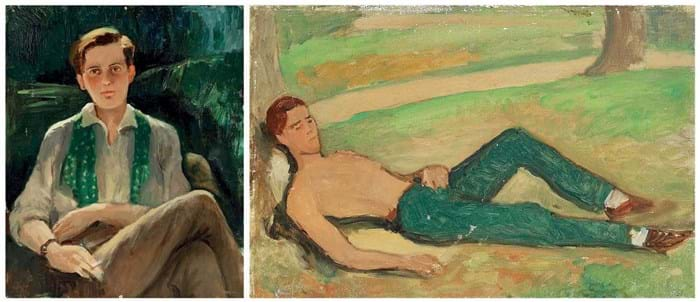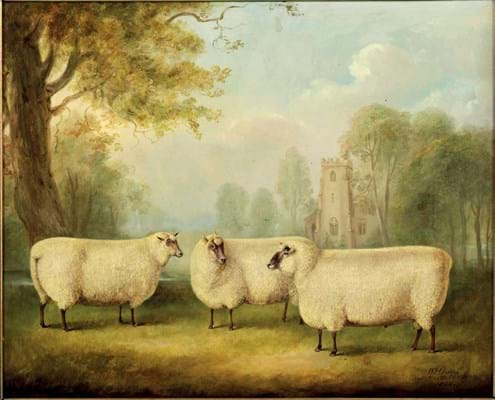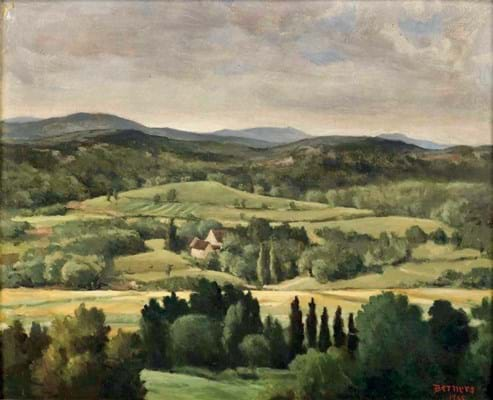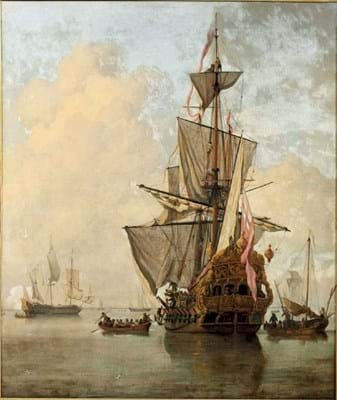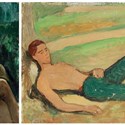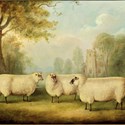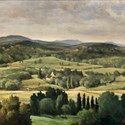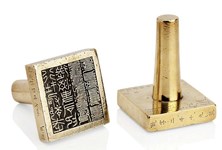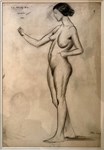British history is scattered with eccentrics such as Gerald Tyrwhitt- Wilson (1883-1950), the flamboyant aristocrat, composer, writer, painter and aesthete known as Lord Berners.
At Faringdon House, the Oxfordshire home Lord Berners shared with his young lover, Robert ‘Mad Boy’ Heber-Percy, he dyed the estate’s doves pink, put dogs in pearl collars, and, on one occasion, invited a horse to tea.
His extensive art collection was equally radical, featuring works by trailblazers of the period, such as Henri Matisse, André Derain and Salvador Dalí. Yet, despite his bold tastes, Lord Berners’ own style as a painter was surprisingly conventional and understated.
Inspired by “the directness and simplicity” of the French landscape and portrait painter Jean-Baptiste- Camille Corot (1796-1875), Lord Berners embarked upon a painting career in the early 1930s, holding his first one-man show at London’s Reid and Lefevre Gallery in 1931.
He went on to exhibit around 100 landscape paintings in his lifetime, many of which now reside in private collections.
On April 12, some two dozen oils and watercolours were included in a 150-lot collection of lower to mid-range priced art and antiques from the collections at Faringdon House, offered in an Interiors sale at Christie’s King Street in London (25/20/12% buyer’s premium).
On the day, all 19 lots sold to total £33,200. “Signed Lord Berners paintings and drawings rarely come on the market and Christie’s has only sold four works by him since 2000,” said Benedict Winter, junior specialist at Christie’s.
“Due to their relative rarity, they were expected to perform well in a collection context.”
The ace in the pack was a 14 x 17in (37 x 44cm) oil on board depicting Belley in eastern France. It was almost certainly executed while Lord Berners was staying nearby with Gertrude Stein in 1938.
Exhibited that year at the Salon d’Automne, it was secured at £3800 against a £2000-3000 estimate – a new auction record for the artist according to Art Sales Index.
Elsewhere, a pair of 1930s portraits depicting society figures Diana Mitford and the glamorous Lady Diana Cooper (painted on separate occasions while holidaying in Rome) proved popular, doubling estimates to sell for £1200 and £1600 respectively.
A quartet of portraits depicting the dashing Heber-Percy, split into two lots, also drew eager bidding, totalling £3300.
“Lord Berners dyed the estate’s doves pink, put dogs in pearl collars, and, on one occasion, invited a horse to tea
Lively livestock
Apart from the Lord Berners artworks, the collection from Faringdon House also included several naive livestock portraits that had been in the family since the Victorian period.
Almost certainly acquired by Henry Wilson, 11th Lord Berners (1797-1871), a keen agriculturalist and sheep owner, the group proved highly attractive to collectors.
A portrait of sheep in a landscape by John Vine of Colchester (1809-67), one of the sector’s most recognisable talents, offered together with a work by Richard Whitford (1854-87) believed to depict Wilson’s own prize-winning sheep, more than doubled the high estimate to sell for £13,000.
A 22in x 2ft 3in (56 x 69cm) oil portrait of sheep by William Henry Davis (1803-49), another well-known English painter who specialised in the portraiture of prize farm animals, took £14,000 against a £2000-3000 estimate.
The eager bidding is indicative of the strong market for exaggerated and folksy livestock paintings from the 19th century, which has remained steady in recent years.
In terms of money, the overall star from Faringdon House was a 3ft 3in x 2ft 9in (85 x 84cm) oil on canvas of a flag ship catalogued as by a ‘follower of’ the famous Dutch marine painter, Willem Van de Velde II (1633-1707).
It soared beyond its £4000-6000 guide and was eventually knocked down at £78,000.


